“Blessed is the spot, and the house, and the place, and the city, and the heart, and the mountain, and the refuge, and the cave, and the valley, and the land, and the sea, and the island, and the meadow where mention of God hath been made, and His praise glorified.” —Bahá’u’lláh

The Word of God, say the Bahá'í writings, provides inspiration, rejuvenates souls, gladdens hearts, and renews one’s sense of purpose. Thus, Bahá’ís host devotional gatherings in homes and community centers to take advantage of such benefits through prayer and the reading together of the Bahá'í writings and other scriptures and to create an environment of unity and harmony. Prayer is a central element in all religious traditions and these meetings stress its universal nature.
Prayer offers us an opportunity to commune with our Creator, draw on the revitalizing power of the Word of God, and to contemplate and more deeply appreciate our lives.The meetings, often simple, have a variety of elements to accommodate participants regardless of their religious background. Music, food, and discussion are often present, though the primary purpose is to use prayer’s power to transform, unify, and revitalize.
For many, these gatherings become a refreshing refuge from the discordant and grinding aspects of everyday life. Participants are able to meditate on spiritual principles and gain some perspective on how these principles can be applied to their day-to-day affairs.
Baha'i Spiritual Concepts from Bahai.us on Vimeo.
For more information on the devotional gatherings that Bahá’ís offer, or to attend one in your area please contact us.
Link here for some Bahá'í PrayersBahá'í literature directs that a House of Worship should be built in each city and town, and emphasizes that its doors must be open to all regardless of religion, or any other distinction. The Bahá'í laws emphasize that the spirit of the House of Worship must be a gathering place where people of all religions may worship God without denominational restrictions. The Bahá'í laws also stipulate that only the holy scriptures of the Bahá'í Faith and other religions can be read or chanted inside in any language; while readings and prayers may be set to music by choirs, no musical instruments may be played inside. Furthermore no sermons may be delivered, and no ritualistic ceremonies practiced.
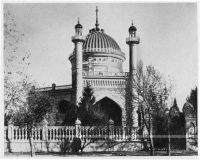
The first Bahá'í House of Worship was built in the city of 'Ishqábád, then ruled by Russia and now the capital of Turkmenistan. It was started in 1902 and completed in 1908. The design was prepared by Ostad Ali-Akbar Banna, and the construction was supervised by Vakílu'd-Dawlih, later named one of the nineteen Apostles of Bahá'u'lláh.

The cornerstone for the Baha'i House of Worship in Wilmette, Illinois was brought to site by Nettie Tobin and accepted in 1912 by 'Abdu'l-Baha during his only visit to the United States and Canada.
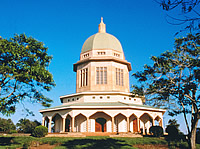
The Mother Temple of Africa is situated on Kikaaya Hill, in Kawempe Division, in northern Kampala, Uganda's capital and largest city. It was designed by Charles Mason Remey. Its foundation stone was laid in January 1958, and it was dedicated on January 13, 1961.
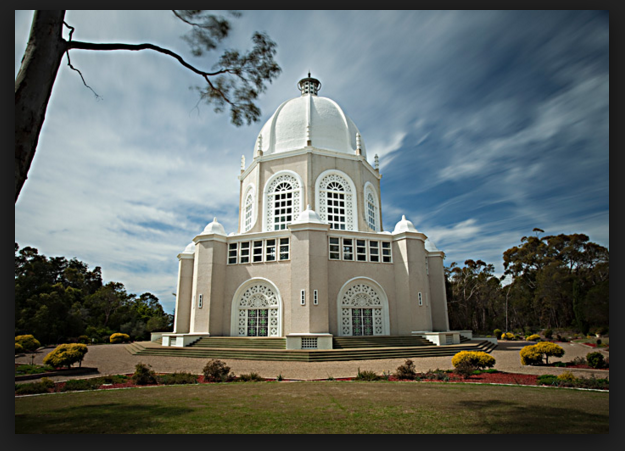
The Temple in Sydney, Australia was dedicated on September 17, 1961 and opened to the public after four years of construction. The initial design by Charles Mason Remey was approved in 1957, and given to Sydney architect John Brogan to develop and complete. Construction materials include local hardwoods and concrete surmounted by a dome, with seating for six hundred people. The building stands 38 metres in height, has a diameter at its widest point of 20 metres, and is a highly visible landmark from Sydney's northern beaches.
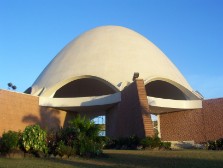
The Bahá'í temple in Panama City, Panama, completed 1972, designed by Peter Tillotson. It serves as the mother temple of Latin America. It is perched on a high cliff, "Cerro Sonsonate" ("Singing Hill"), overlooking the city, and is constructed of local stone laid in a pattern reminiscent of Native American fabric designs.

The Mother Temple of Europe is located at the foot of the Taunus Mountains of Germany, in the village of Langenhain, in the Frankfurt suburb of Hofheim, Hesse. It was designed by Teuto Rocholl. It was completed in 1964 and is made of steel, aluminium, and glass. 540 diamond-shaped windows give the dome an optical lightness and permit the sunlight to play in it.

The Lotus Temple is a Baha'i House of Worship located in New Delhi, India, and also a prominent attraction in Delhi. The temple was designed by Fariborz Sahba, an architect from Iran. The temple took 6 years to complete, where the construction began on April 21, 1980, and the edifice was formally dedicated to the Unity of God, Unity of Religion and Unity of Mankind on December, 1986. It cost an approximate US $20 million dollars. [1] It has won numerous architectural awards and been featured in hundreds of newspaper and magazine articles.[2]
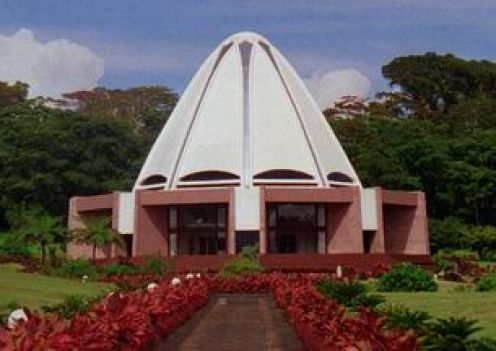
The Bahá'í House of Worship in Tiapapata, 8 km from Apia, Samoa, was completed in 1984 and serves as the Mother Temple of the Pacific Islands. The design was by Hossein Amanat, and was dedicated by Malietoa Tanumafili II, King of Samoa (1913–2007), who was the first reigning Bahá'í monarch. Its 30-meter domed structure is open to the public for individual prayer, commemoration of Baha'i holy days, and weekly devotional meetings. The structure is completely open to the island breezes.
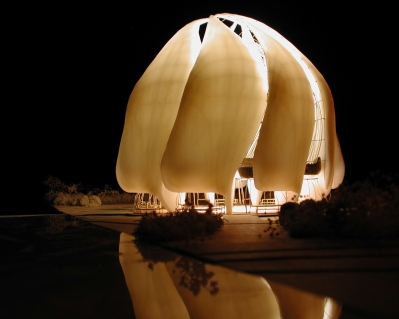
The first Baha'i House of Worship in South America is nearing completion in the Andean foothills outside Santiago, Chile with a panoramic view of the mountains in three directions.The dedication will take place in the Fall of 2016.
Amazing videos showing the construction of the House of Worship for South America